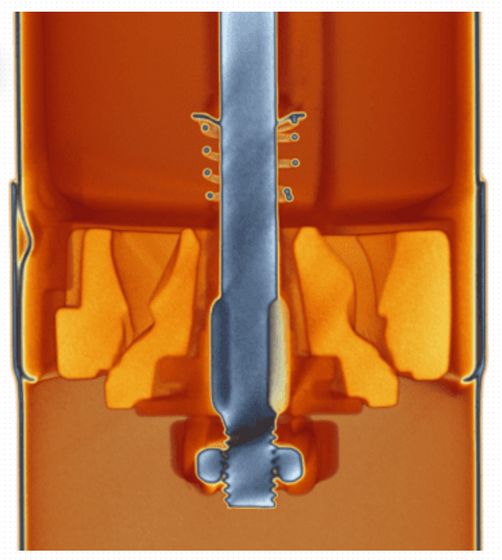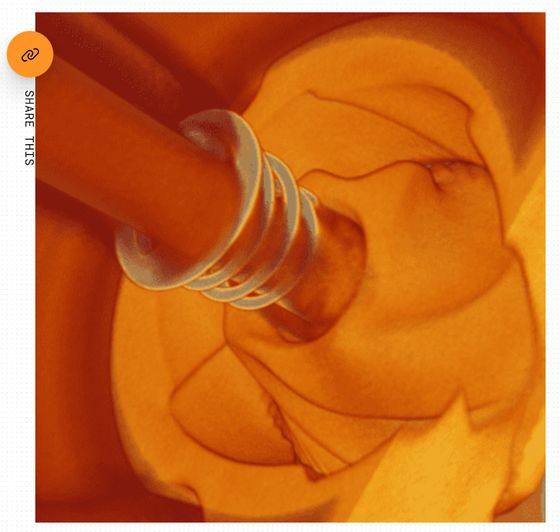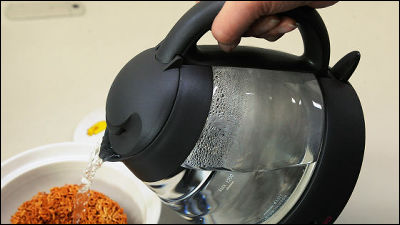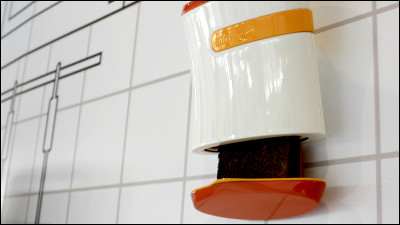What are the results of CT scanning various coffee products such as Mocha Express and burr grinders (coffee mills) to examine their internal structures?

Coffee, which has its roots in Arabia, became popular in Europe in the 17th century, and from the 20th century onwards, coffee began to be drunk not only in coffee shops but also at home. The website ``scanofthemonth.com'', which publishes CT scan images of
Coffee evolution from the Moka Express to the AeroPress and Fellow Stagg EKG Ket
https://www.scanofthemonth.com/scans/coffee
◆ Mocha Express
The Mocha Express, developed by Italian Alfonso Bialetti in 1933, is a device that uses the steam pressure of boiling water to extract coffee. Alfonso's son Renato further refined the original Mocha Express, adopting the octagonal design and resin handle that are still familiar today, and combined with an effective advertising strategy, Bialetti's Mocha Express spread all over the world. I was.

Moka Express has three main aluminum parts: a ``chamber to hold water'' at the bottom, a ``basket with filter to hold coffee grounds'' in the middle, and a ``chamber to store freshly brewed coffee'' at the top. It consists of

When the water in the lower chamber boils and creates steam, the pressure of the steam pushes the hot water up through the filtered basket, past the coffee grounds inside the basket as it does so. Coffee extracted through the powder accumulates in the upper chamber. A CT scan image showed that the basket had many small holes through which water could pass.

In addition, when scanofthemonth.com compared the new Mocha Express purchased on Amazon with the old Bialetti Mocha Express, it was found that the new Mocha Express was inferior in casting quality and had many cavities inside the aluminum. Scanofthemonth.com speculates that this is due to Bialetti's move of manufacturing outside of Italy.

◆ Aeropress
Aeropress is a coffee extraction device invented by former engineering professor Alan Adler in 2005. It is easy to extract coffee in a short time and is highly portable, so he wants to drink coffee outdoors. We are gaining support from people.

The aeropress consists of two main parts, a ``cylindrical chamber'' and a ``plunger with a rubber seal''. Pour coffee grounds and hot water into the chamber, mix them, soak them for a while, and then push down the plunger. It is a mechanism that generates air pressure and extracts coffee.

A detailed CT scan of the Aeropress from 7 years ago revealed that there was a gap of 0.5mm between the side of the silicon seal

The new Aeropress has a lower density of plastic than the old Aeropress and appears darker in CT scan images. scanofthemonth.com surmised that this material change would reduce wear on the plunger over time. In addition, if you are having trouble with water leakage with the aeropress, be careful not to use hot water that is too hot, check if the filter or cap is loose, or grind the coffee beans a little coarsely. It seems to be a good idea to add .

◆Gooseneck kettle
When extracting coffee using a dripper or filter, many coffee lovers use a gooseneck kettle with a narrow spout to pour hot water evenly over the coffee beans to prevent uneven extraction. . scanofthemonth.com CT scans an electric kettle made by Silicon Valley-based

You can see that the spout has small grooves to help control the flow of water, and a high-density weight is embedded in the handle. By increasing the weight of the handle part, it increases the stability when pouring hot water and enables precise control of hot water. Also, the reason why the bottom part of the kettle is slightly dented inward is to increase the surface area exposed to the heating element and promote the formation of convection, making it easier for heat to spread throughout the kettle.

The bottom coil is a 1200W heating element, and the hot water in the kettle reaches the optimum temperature within just 3 minutes. It also had a thermal cut-off switch to cut off the current and prevent fires when the temperature exceeded a certain value.

◆
When you think of a coffee grinder, you might imagine a somewhat vertically long box with a large handle, but in recent years, compact cylindrical coffee grinders have become popular. scanofthemonth.com CT-scanned a coffee grinder from Japanese coffee equipment manufacturer Porex .

Porex's coffee mill is a type called 'burr grinder', and instead of grinding coffee beans with a large blade, it is a mechanism that grinds coffee beans with a saw-shaped tooth called 'burr'.

When you expand the part of the burr, it looks like this. Fine teeth are lined up in an inverted cone shape toward the bottom, so that coffee beans can be slowly drawn over a large surface area.

When you change the angle, you can see that the teeth are lined up to draw a spiral. It is possible to make coffee powder with a more uniform particle size with a conical burr, and it is possible to reduce clogging during extraction. In addition, scanofthemonth.com said that Porex's coffee mill is made of ceramic, so it has a high heat capacity, does not rust, and can avoid adding extra heat to the coffee powder during grinding.

Related Posts:







